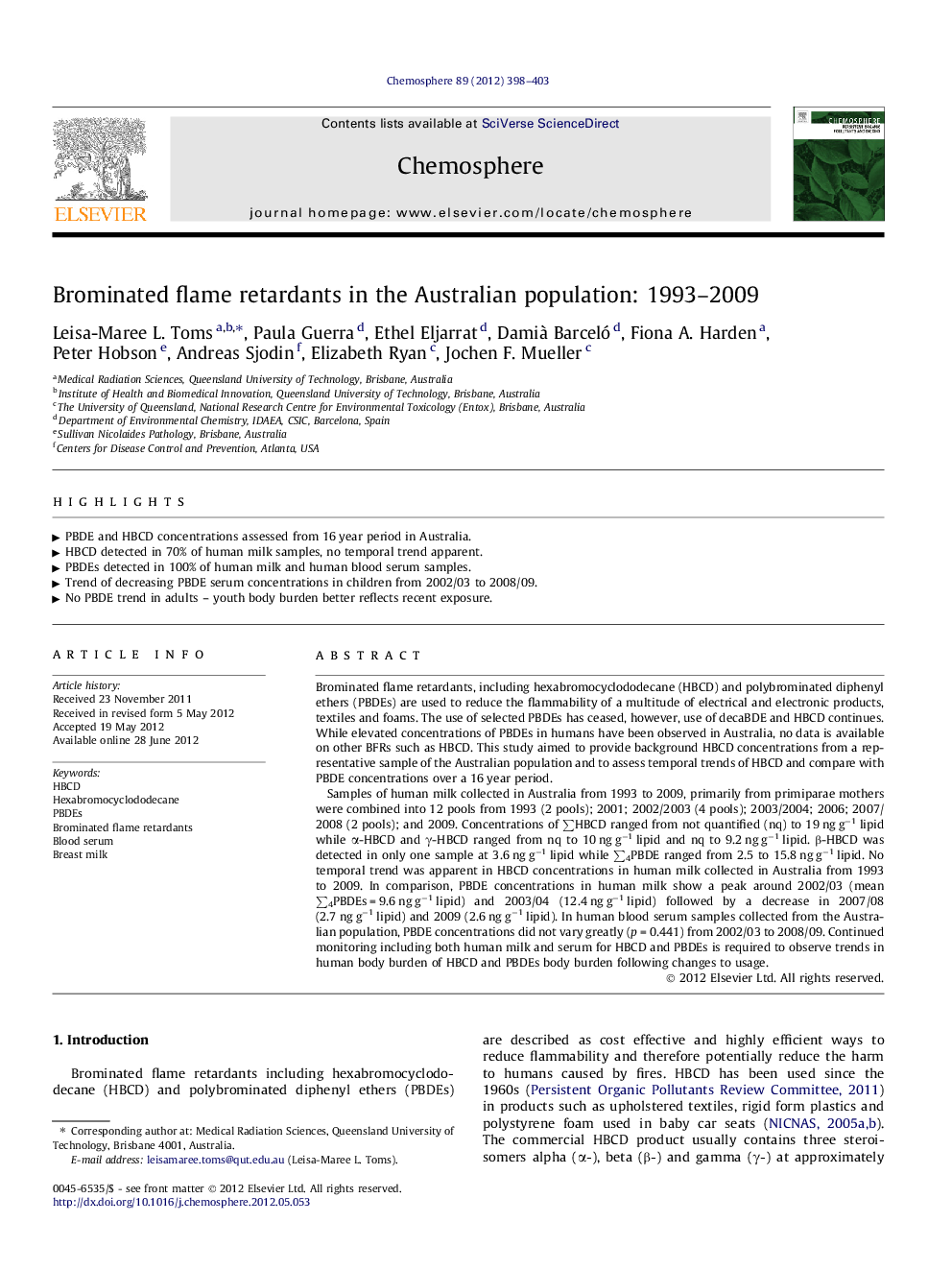| کد مقاله | کد نشریه | سال انتشار | مقاله انگلیسی | نسخه تمام متن |
|---|---|---|---|---|
| 4409601 | 1307492 | 2012 | 6 صفحه PDF | دانلود رایگان |

Brominated flame retardants, including hexabromocyclododecane (HBCD) and polybrominated diphenyl ethers (PBDEs) are used to reduce the flammability of a multitude of electrical and electronic products, textiles and foams. The use of selected PBDEs has ceased, however, use of decaBDE and HBCD continues. While elevated concentrations of PBDEs in humans have been observed in Australia, no data is available on other BFRs such as HBCD. This study aimed to provide background HBCD concentrations from a representative sample of the Australian population and to assess temporal trends of HBCD and compare with PBDE concentrations over a 16 year period.Samples of human milk collected in Australia from 1993 to 2009, primarily from primiparae mothers were combined into 12 pools from 1993 (2 pools); 2001; 2002/2003 (4 pools); 2003/2004; 2006; 2007/2008 (2 pools); and 2009. Concentrations of ∑HBCD ranged from not quantified (nq) to 19 ng g−1 lipid while α-HBCD and γ-HBCD ranged from nq to 10 ng g−1 lipid and nq to 9.2 ng g−1 lipid. β-HBCD was detected in only one sample at 3.6 ng g−1 lipid while ∑4PBDE ranged from 2.5 to 15.8 ng g−1 lipid. No temporal trend was apparent in HBCD concentrations in human milk collected in Australia from 1993 to 2009. In comparison, PBDE concentrations in human milk show a peak around 2002/03 (mean ∑4PBDEs = 9.6 ng g−1 lipid) and 2003/04 (12.4 ng g−1 lipid) followed by a decrease in 2007/08 (2.7 ng g−1 lipid) and 2009 (2.6 ng g−1 lipid). In human blood serum samples collected from the Australian population, PBDE concentrations did not vary greatly (p = 0.441) from 2002/03 to 2008/09. Continued monitoring including both human milk and serum for HBCD and PBDEs is required to observe trends in human body burden of HBCD and PBDEs body burden following changes to usage.
► PBDE and HBCD concentrations assessed from 16 year period in Australia.
► HBCD detected in 70% of human milk samples, no temporal trend apparent.
► PBDEs detected in 100% of human milk and human blood serum samples.
► Trend of decreasing PBDE serum concentrations in children from 2002/03 to 2008/09.
► No PBDE trend in adults – youth body burden better reflects recent exposure.
Journal: Chemosphere - Volume 89, Issue 4, October 2012, Pages 398–403